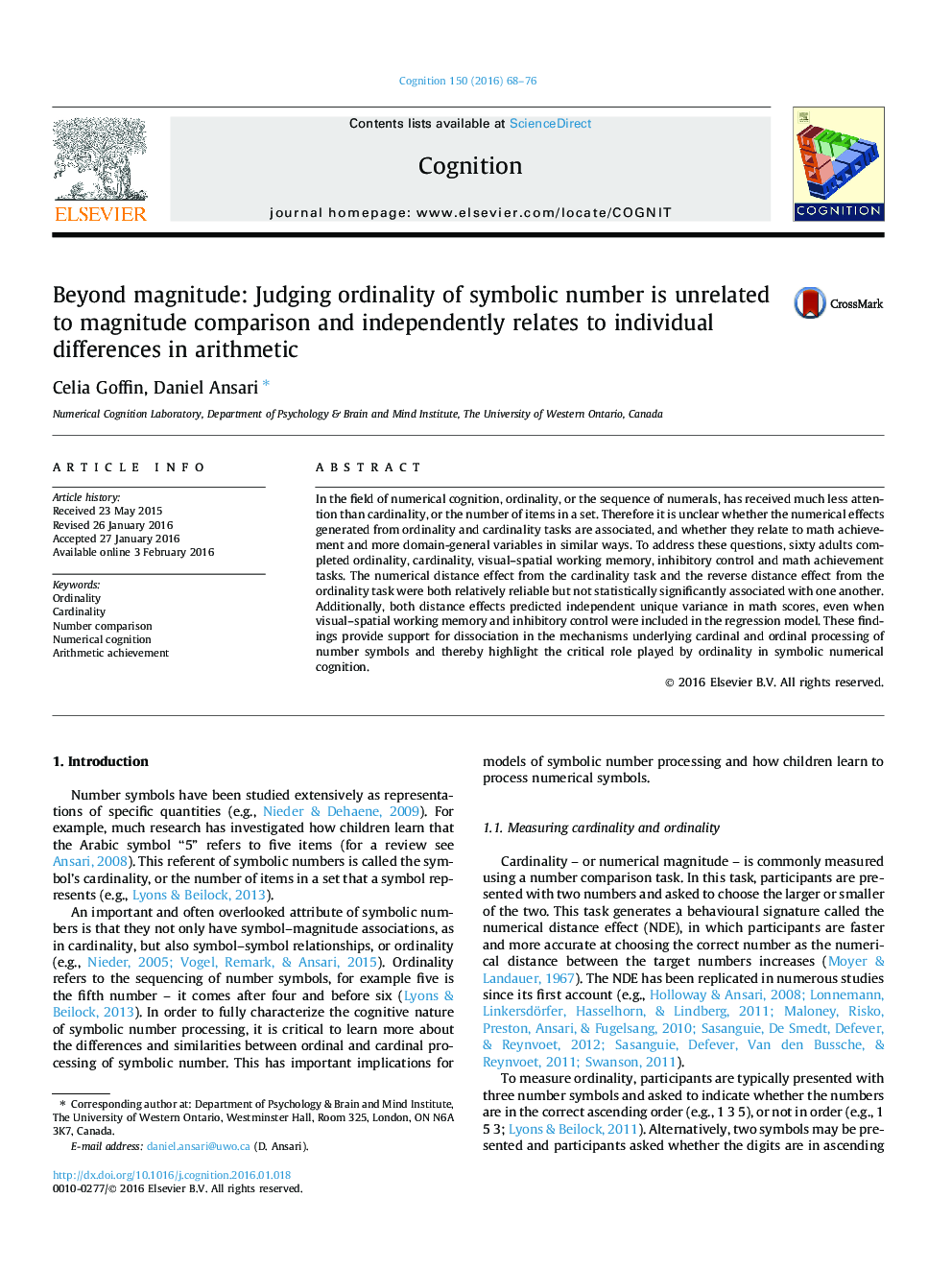| Article ID | Journal | Published Year | Pages | File Type |
|---|---|---|---|---|
| 7286217 | Cognition | 2016 | 9 Pages |
Abstract
In the field of numerical cognition, ordinality, or the sequence of numerals, has received much less attention than cardinality, or the number of items in a set. Therefore it is unclear whether the numerical effects generated from ordinality and cardinality tasks are associated, and whether they relate to math achievement and more domain-general variables in similar ways. To address these questions, sixty adults completed ordinality, cardinality, visual-spatial working memory, inhibitory control and math achievement tasks. The numerical distance effect from the cardinality task and the reverse distance effect from the ordinality task were both relatively reliable but not statistically significantly associated with one another. Additionally, both distance effects predicted independent unique variance in math scores, even when visual-spatial working memory and inhibitory control were included in the regression model. These findings provide support for dissociation in the mechanisms underlying cardinal and ordinal processing of number symbols and thereby highlight the critical role played by ordinality in symbolic numerical cognition.
Related Topics
Life Sciences
Neuroscience
Cognitive Neuroscience
Authors
Celia Goffin, Daniel Ansari,
